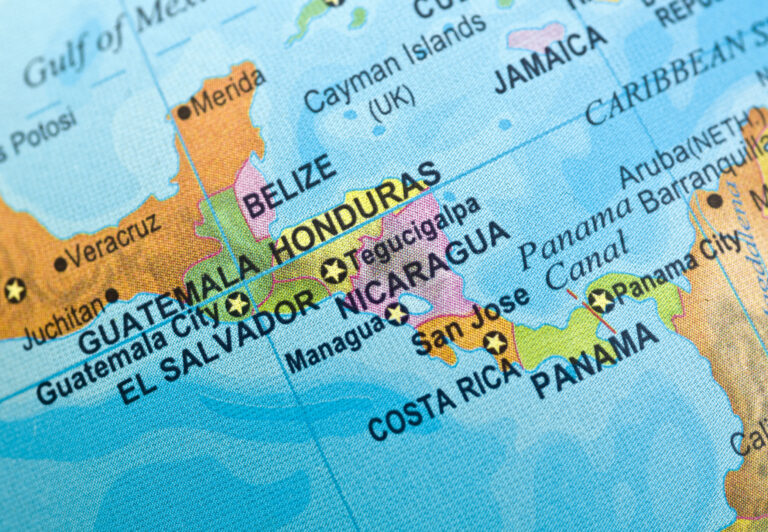PRI TV SERIES: Three one-hour PRI programs on life and population control
will air on EWTN at 9:00 pm ET January 18, 19, and 20. Hosted by Steve
Mosher, “Building the Culture of Life” will feature Mexico on Jan. 18,
Spain on Jan. 19, and New Zealand on Jan. 20. Please tune in.
January 5 2006
Volume 8 / Number 1
What Mexican Women Want
Dear Colleague:
Instead of asking Western-funded feminist activists what women in the
Third World want by way of health care, as the media generally do, we
asked real Third World women. “Reproductive health care” came in dead
last. This is my analysis.
Steven W. Mosher
President
The Mexican government, as we have previously reported, is aggressively
seeking to drive down the nation’s birthrate to below replacement. Young
mothers who come to government-run clinics and hospitals to deliver their
babies are pressured to accept either sterilization or an IUD. This
abusive program was formulated by Mexico’s National Population Council
(CONAPO) in consultation with the U.N. Population Fund (UNFPA), which
continues to fund it today.[1]
This program, rather disingenuously referred to as “reproductive health
care,” is arguably the Ministry of Health’s top priority. It is more
generously funded and vigorously pursued than other forms of health care,
such as those addressing HIV/AIDS or sexually transmitted diseases.
The question we asked ourselves was this: How do the health priorities of
ordinary Mexican women compare with those of the government? Do women
support the government’s anti-natal agenda, or do they see other health
needs as more pressing?
To answer this question we carried out a survey of the health needs of
women-as they themselves perceived these-in the Mexican city of
Guadalajara. Who wants reproductive health care? Not the women of
Mexico, it turns out.
Guadalajara, located in the western part of the central highlands, is
Mexico’s second city. It is home to some 4 million people. It is a
transportation and marketing hub. Several major highways, carrying
national and international heavy transport, as well as almost everything
else, traverse the city. The residents are small shopowners and
tradesmen, mechanics and other service providers. Television and
telephones, both conventional and cellular, are widely available. Most of
the inhabitants have received some education, and literacy rates are high.
Like Mexicans in general, the residents of Guadalajara are religious,
with about 90% identifying themselves as Catholics, and the rest adhering
to various Protestant sects.
A total of 370 women were interviewed by one of ten trained interviewers
in different districts of the city. The interviewers went door-to-door in
their respective districts.[2] Those interviewed were shown a list of 15
different public health programs, and asked to order the list in terms of
their own personal needs, putting their most pressing need first and their
least important need last. The health programs listed were Reproductive
Health,[3] vaccinations, HIV/AIDS, Family and Child Abuse, Natural Family
Planning, Sexually Transmitted Diseases, Lifestyle, Maternal and Neonatal,
Potable Drinking Water and Sewage, Psychological, Cholera, Diarrhea,
Tuberculosis, Malaria, and Leprosy. Other information collected included
age, religion, marital status, and prior history of contraception,
sterilization, and abortion.
The date on health needs reported by respondents was entered into a
database and the mean rank order was calculated for each category of
health care. The lower the rank order for a particular kind of health
care, the greater the need for such health care expressed by the
respondents. The results are shown in Table 1.
HEALTH NEED FOLLOWED BY MEAN RANK ORDER
Vaccinations: 5.13
HIV/AIDS: 5.32
Family & Child Abuse: 5.32
Natural Family Planning (NFP): 5.82
Sexually Transmitted Diseases (STDs): 6.24
Lifestyle: 6.26
Maternal & Neonatal: 7.30
Potable Drinking Water & Sewage: 7.98
Psychological: 8.88
Cholera: 9.18
Diarrhea: 9.44
Tuberculosis: 9.83
Malaria: 10.28
Leprosy: 10.67
Reproductive Health: 12.02
Table 1: Desirability of Health Programs in Mexico: Note that the higher
the mean rank order, the more desired the programs are in the view of the
respondents.
What do these modern Mexicans have to say about their health care needs?
They list their most pressing concerns as Vaccinations, HIV/AIDS
Prevention, Child and Family Abuse, and NFP. Now Vaccinations are needed
to prevent such diseases as Tuberculosis, Measles, and polio, while
HIV/AIDS needs no explanation. Because of Mexico’s machismo culture,
family and child abuse remains a difficult problem. The only mild surprise
in this cluster of top-ranked health needs is the presence of Natural
Family Planning, or NFP, which was welcomed by many respondents as a safe
and natural means of regulating their fertility, a point to which I will
return in a moment.
Second-order health needs listed by the women interviewees include
sexually transmitted diseases, or STDs; lifestyle diseases, primarily
alcohol- and drug-related problems; maternal and neonatal health care;
and potable drinking water and sewage treatment programs. The problems of
STDs, alcohol addiction and drug addiction are another aspect of Mexico’s
culture. The relatively high ranking of maternal and neonatal health care
can be read as a cry for help on the part of mothers whose “reproductive
health care” consists of a tubal ligation or IUD insertion following
delivery. Mexicans are also aware that polluted drinking water, not to
mention the lack of proper sewage treatment facilities, is a vector for
the transmission of dysentery and other diseases, and so would like to see
the water supply made safe. All in all, the Mexican health problems given
priority by the women are commonly recognized as such by outside
observers, confirming the good judgment of those we surveyed.
The health problems that follow–Psychological problems, Cholera,
Tuberculosis, Malaria, and Leprosy–although not affecting the large
percentage of the population that, say, Family and Child Abuse can, are
nonetheless endemic to Mexico. Here again, the views of those we spoke
with accord well with Mexico’s epidemiological realities.
The single most striking result of the survey was the dismal showing of
Reproductive Health. This category of health care, defined as the
limitation of childbearing by means of contraception and sterilization,
came in dead last. The Mexican women we surveyed would prefer almost any
kind of health care to the kind of “either-IUD-or-Ligation” programs that
they have been force-fed the past few decades.
Many proponents of family planning will view these results as
contradictory. They will ask how the Mexicans can praise Natural Family
Planning on the one hand, while condemning reproductive health care on the
other. They will maintain that the two family planning methods are merely
different means to the same (i.e., anti-natal) end? They will be wrong.
As it turns out, the people of Mexico have a far better understanding of
the differences between Natural Family Planning and reproductive health
care than the controllers. And they vastly prefer a method over which
they have intimate control-NFP– to the permanent, or semi-permanent
methods imposed by the National Population Council and the U.N. Population
Fund.
Those we talked to were not using NFP as shorthand for “family planning.”
And those who expressed, in the “comments” section, a desire for more
education in NFP were not thereby expressing a preference for fewer
children. Indeed, in the Mexican context it is just as likely that they
would use this additional education in NFP to conceive a child as it is
that they would use it to delay conception. Their interest in NFP centered
on the fact that they themselves, and not some distant, even foreign,
government agency, would determine the number and spacing of their
children.
Bear in mind that those with whom we spoke were not backward, tribal
people, but highly Westernized and educated residents of one of Mexico’s
most modernized cities. Note also that their prioritization of their
health care needs was highly rational, that is to say, that it accords
well with the real diseases and health problems that they and their
families must contend with on a daily basis. Why should their views on
their own health care needs, including their rejection of so-called
reproductive health care, not be taken seriously in planning health care
programs?[4]
Meeting the real health needs of women in the developing world, as they
themselves define those needs, would mean funding primary health care.
Instead the controllers ignore the views of women, view their fertility as
a threat, and act to neutralize that perceived threat by disabling their
reproductive systems. To paraphrase pro-life feminist Angela Franks, if
women’s fertility is causing social, economic, environmental, or health
problems, as the controllers believe, and if women refuse to acknowledge
this reality, it is for the greater good that they be persuaded, or
compelled, or forced to stop having children. Kingsley Davis and other
population alarmists have long said that it is necessary, in the interest
of reducing population growth, to make it less pleasant for women to do
what so many of them enjoy doing, namely, raising children.[5]
Still, population control organizations find it highly inconvenient that
their programs are not greeted with joy by their “targets,” and they go to
great lengths to disguise or explain away this fact. Overseas, they work
overtime to create the impression of robust popular and government support
for their anti-natal programs, recruiting local surrogates, suborning
government ministries of health and education, launching media blitzes,
and sponsoring contraceptive giveaways. This façade falls away in
discussions with donors, in which they arrogantly suggest that the women’s
reluctance to contracept comes about because they either don’t know their
own minds, or because they simply don’t know what’s good for them (or
their country, or the environment, etc.).
The Mexican women we spoke with knew their own minds, and their views
should be respected, both by their government and by the U.N. Population
Fund.
[1] UNFPA will continue to fund this program with $12 million through
2006. See
(http://www.unfpa.org/regions/lac/countries/mexico/4mex0206.pdf).
[2] Randomness was approximated by four factors: 1. the interviewees were
sought out at random in their homes. No attempt was made to seek out
interviewees on the basis of ethnic group, religious affiliation, or other
characteristics. 2. The interviews were conducted at the rate of 20 or
30 per week over a six-month period. 3. The only age restriction imposed
on the respondents was that they must be over 18. 4. The influence of
language factors on the selection of respondents was minimized by the fact
that each interviewer was fluent and literate in Spanish.
[3] “Reproductive health,” was explained to respondents as the provision
of contraceptives or sterilization, while “Natural Family Planning,” or
NFP, was described as a natural, i.e., non-surgical and non-chemical,
means of conceiving or delaying children.
[4] Similar results were obtained from a survey of Ghanaian women. See
“What Do African Women Want,” PRI Review (July-August 2001) 11 (3):1-5.
[5] Kingsley Davis, “Population Policy and the Theory of Reproductive
Motivation,” Economic Development and Cultural Change, Vol. 25,
Supplement, 1977, 174-78.










